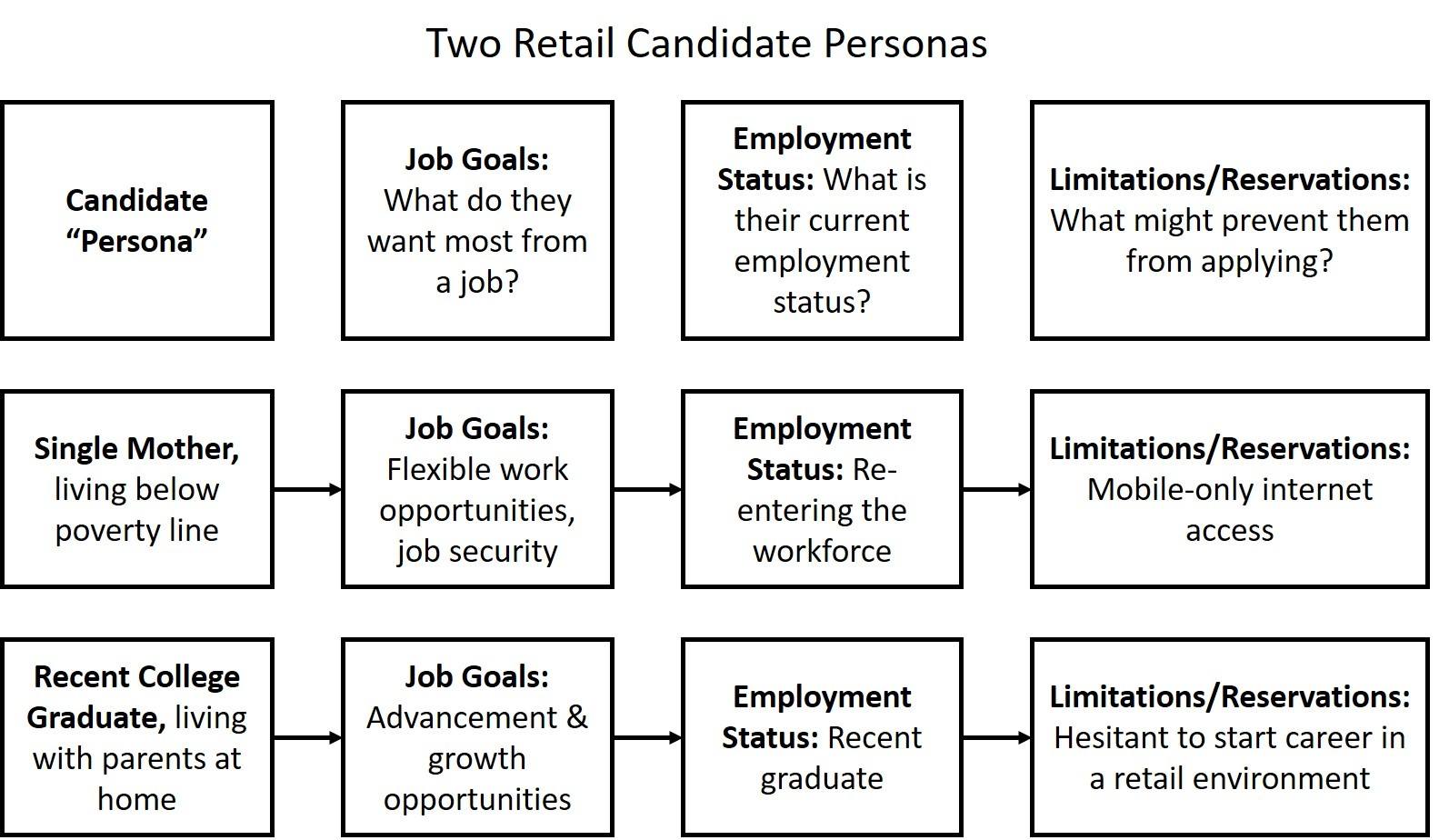Candidates: Are you interviewing and need support?
Are recruiters more like salespeople or marketers? No matter where you stand in this debate, talent acquisition is seeing value adopting some of the procedures used by their sales and marketing counterparts.
Persona development is one of the most valuable protocols talent acquisition should adapt from their coworkers in marketing and sales.
“Personas” are archetypes of your potential buyers, decision-makers, and buying influencers. These archetypes are created based on each position’s status in their organization and their decision-making power.
Whenever marketers build out a piece of content (like an advertisement, blog post, or eBook), they create it with certain personas in mind.
Example: Personas in a Sales Organization
Imagine that you’re selling a sales training program. Your persona breakdown might look something like this:
- Chief Revenue Officer. Responsible for all revenue generation in the organization. The CRO will probably not make the decision to buy the training program (they have broader issues to focus on), but they will be the one to sign off on the contract.
- VP of Sales. Responsible for B2B sales, and oversees the activities of Sales Directors. The best, but most difficult to persuade, buyer of the training program - if the VP buys your program, organization-wide adoption will be much easier to implement.
- Sales Director. Responsible for B2B sales in a large geographical area (North America, EMEA, etc). An easier sell than the VP of Sales, but not as big of a sale.
- Sales Manager. Responsible for B2B sales in a smaller geographical area (American East Coast, etc). The easiest buyer to reach, but also the smallest potential deal size.
- Sales Representative. Not a buyer of the sales program - but if a high-performing sales rep likes and suggests your program to their Manager or Director, it could have a big impact on their decision to buy.
Every “persona” has different goals. Sales Managers want their reps to exceed their quotas. The VP of Sales wants to accelerate B2B revenue generation across the organization.
Focusing on each persona’s unique goals and objectives allows you to more effectively create content and advertisements that interest them.
Consider how you might introduce Sales Managers and Sales Directors to your training program differently:
- Sales Managers are responsible for training front-line reps: they'll be most interested in content related to that responsiblity. Think a blog post that outlines best practices for onboarding brand new sales representatives.
- Sales Directors do not train front-line reps: they manage the managers. You'll be better off targeting this buyer persona with an eBook detailing how to transition top performing Sales Reps to top performing Sales Managers.
In Talent Acquisition, this plays out in a slightly different way.
Candidate Personas
Unlike sales or marketing, talent acquisition is not attempting to trade a product for a portion of the candidate’s budget. Instead, you’re asking them to trade their time for the opportunity to work for your organization.
In other words, you need to convince potential candidates of two things:
- Filling out your application is the best use of their time.
- Your organization is worth working for.
You should keep these two things in mind when creating your candidate personas.
A Framework for Creating Candidate Personas
Like buyers, job seekers have different goals and desires. Some might prioritize the opportunity for flexible hours. Others are more than happy to work overtime every week - so long as they’re rewarded with advancement opportunities. Below is a sample candidate persona framework. 
Let’s look at how this might look in an entry-level retail hiring setting that offers flexible hours and substantial opportunities for promotion to management.
As you can see, two potential candidates for the same role might have drastically different goals and needs.
Targeting the recent graduate with messaging around flexible work opportunities might send the wrong message: they could mistake “flexible work” for “part-time employment with few opportunities for growth”. For the single mother, you'll need to put a focus on optimizing your job application (and relevant job-related content) for mobile devices.
Both personas fill critical needs in the workplace, but targeting them with the wrong messaging will be counterproductive.
Identifying different candidate archetypes will not only help you target them where they are (Facebook vs. Google ads, for example), it will ensure your messaging and job-related content are hitting their mark.




